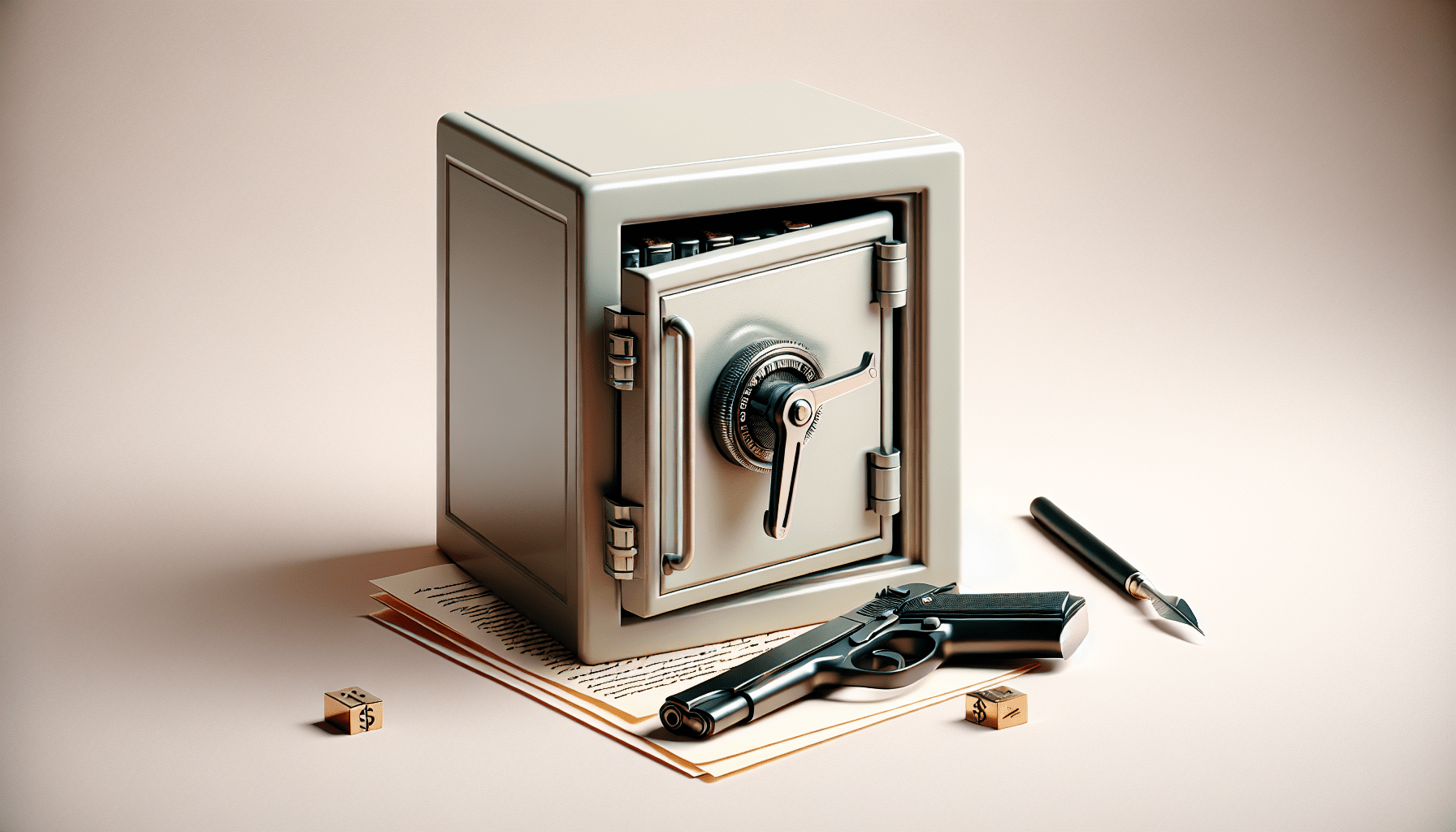Have you ever wondered how you can teach your child about gun safety in emergencies? This is a topic that can often seem overwhelming, or perhaps even intimidating, but with the right approach, you can help equip your children with the knowledge they need to handle such situations intelligently and safely. This is not about instilling fear, but about fostering understanding and building confidence in your child’s ability to react appropriately.

The Importance of Gun Safety
Teaching children about gun safety is crucial. Guns are tools that require respect and care. By having an open conversation, you can demystify them and make your child better prepared should they encounter a gun.
Children’s natural curiosity can lead them to places and objects you might not expect. Guns can be present in the homes of friends and family without your knowledge. This makes education a key defense.
Why Start Early?
Starting gun safety education early instills a lifelong respect for firearms. It’s like teaching road safety or fire drills. You want these lessons to be instinctive. Kids understand more than you think, and simplifying complex topics makes them more approachable.
Addressing Myths and Misconceptions
There are many myths about guns that children might pick up from media or peers. These can lead to dangerous situations if not corrected. It’s crucial to replace misconceptions with facts.
You may discover that children believe guns can only exist in action movies or video games, far removed from reality. By showing them these aren’t toys and explaining their real-world implications, you bridge the gap between fiction and reality.
Gun Safety Basics for Children
Setting a foundation with simple gun safety rules helps children remember and apply them when necessary. Introduce these rules calmly and confidently, which reassures them rather than scares them.
The Four Basic Rules
- Stop: If they see a gun, they should stop immediately.
- Don’t Touch: They should never pick up a gun or touch it.
- Leave the Area: Take themselves away from a firearm’s vicinity.
- Tell an Adult: Inform a trusted grown-up about the gun.
These rules provide a simple and effective framework. Practice these like any other safety drill until they become second nature.
Using Games and Activities
Turn education into an engaging experience by using games and activities. This approach can make potentially heavy topics seem more manageable and inclusive.
interactive activities or role-playing scenarios help solidify what you’ve taught. Think of it as rehearsing steps to take during an emergency, which makes these rules second nature.
Understanding Emergencies with Guns
An emergency involving a gun is a scenario everyone would rather avoid. However, instructing children on responding to emergencies can help them remain calm, make safe decisions, and prevent panic.
What Constitutes an Emergency?
Explain what an emergency is in a context they understand. For children, an emergency is when things happen suddenly that can cause harm or injury. Knowing the nature of emergencies demystifies them, making the goals clear.
Responding to Different Situations
Every emergency with guns won’t follow one script. Sometimes, an emergency might involve hearing about a gun being nearby at school; other times, it might be someone showing them a gun at a friend’s house. Discuss various scenarios and involve your child in thinking through them.
Effective Communication About Guns
clear communication with children about guns can ensure they are well informed and equipped to handle unexpected situations. Create an environment that encourages questions and dialogue.
Keeping the Conversation Going
Make this an ongoing discussion rather than a one-time conversation. Regular check-ins reinforce learning and keep the lines of communication open.
Encouraging Questions
Children naturally have questions, and fostering an environment where they feel comfortable asking them is crucial. Patient answers to their inquiries can help dispel fears and misunderstandings.

Role of Schools in Gun Safety Education
Schools can play a pivotal role in promoting gun safety. They often have established emergency drills and guidelines, which can complement what you teach at home.
School Drills and Safety Programs
Many schools conduct drills for emergencies involving guns. These drills are invaluable because they provide structured practice and reinforce the concept of safety beyond the home environment.
Involving Educators in the Discussion
Since educators often play a pivotal role, engaging them in conversations about gun safety can extend awareness. Schools can sometimes facilitate workshops and discussions which can prove beneficial.
Resources and Tools for Parents
Parents have access to a wide range of resources to help teach gun safety. Online tools, literature, and expert advice can offer additional support when addressing this subject.
Books and Online Resources
Numerous books and websites focus on educating children about gun safety. These resources can provide valuable perspectives and strategies.
Expert Advice
Consulting with professionals, like child psychologists or law enforcement officers, can provide further insight. They can offer advice on framing conversations or handling complex questions from children.
Teaching Through Simulation and Training
Interactive learning can be highly effective. Experiencing a scenario in a controlled environment can engrain reactions and understanding better than passive learning.
Virtual Shooting Ranges
Virtual shooting ranges allow individuals to understand firearms’ operation without physical danger. This can assist in teaching responsible usage and safety precautions.
Recommended Visits to Training Centers
Resident in or around Pensacola, Florida? Facilities like Green Line Arms offer opportunities to learn about firearms responsibly. Their mission involves promoting responsible handling and mixes learning with practical experience.
Reinforcing Lessons at Home
Gun safety education doesn’t stop after the initial conversation. Consistent reinforcement at home ensures that safety remains a priority.
Creating a Safe Environment
If you own firearms, secure them properly. Safe storage demonstrates the importance of gun safety and sets a standard for your child.
Regular Practice and Review
Review safety protocols regularly just like you would with a fire drill. Repetition helps children recall instructions better during high-stress situations.
Building Confidence and Empowerment
Teaching gun safety aims to empower, not frighten. Conveying this message with confidence encourages the same response in children.
Instilling a Sense of Security
When children feel prepared, they feel more secure. Reassure them through practice and honest communication.
Celebrating Progress
Acknowledge progress and understanding. Offering praise can strengthen the confidence to apply their learnings.
Conclusion
Exploring gun safety with children is an essential step towards ensuring their well-being in emergencies. While this topic can initially seem daunting, your guidance through conversation, education, and practice empowers them to make safe decisions. In striving for a safe environment, we foster communities that understand and respect the power and responsibility that come with firearms. For hands-on training and further expertise, consider visiting places like Green Line Arms. Through patience and dedication, you provide the tools they need to navigate a complex subject with confidence and safety.




